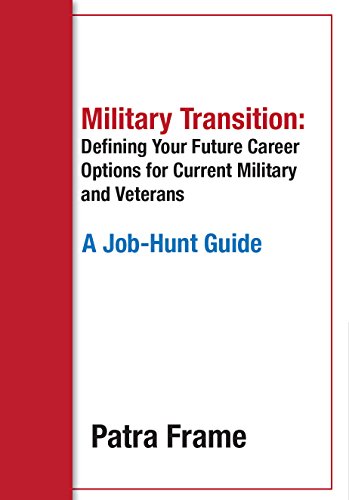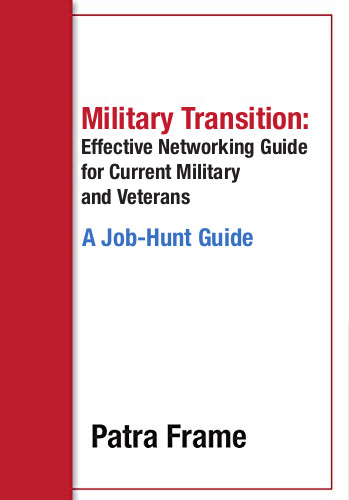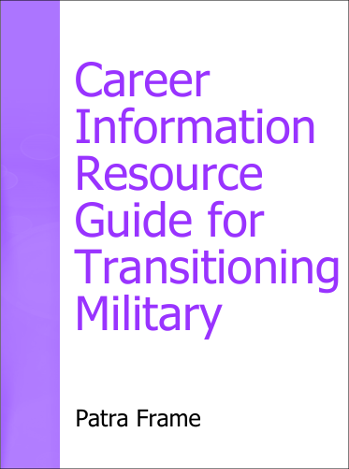Writing a clear, concise resume that makes hiring managers and recruiters want to contact you is critical. It is not, however, like much other writing you do. Few of us write one regularly, so when we do it is new again and difficult.
First: gather your work history, decide on your next goals and career step, research your options and magically toss these elements into a great advertisement for your value. Remember, a resume is an advertisement and not your biography.
You can do this, here’s how.
Preparation
Before you start actively searching for jobs, define the work you want to do next – the job(s) you want and the organizations you want to target first. Be very specific. You cannot write an effective resume unless you know both what job you want and your target employers’ requirements.
Ideally, you have a master resume showing your achievements and promotions and kudos at every position since you started working. Most of us don’t do that. Now might be a good time to create one. Mining individual past resumes is not as smart as a master since each past resume was designed for the job you wanted then and thus omitted information you might now need.
Gather your work and educational history. Look at each past position to see what achievements match the scope and requirements of your desired positions. What were you recognized for doing? What did you learn there? Use this information to review and rework your past achievements to support your desired future. Plan a resume which demonstrates how you will contribute immediately so employers see you as a valuable candidate.
Drafting Your Resume
The Basics
The standard format of a resume is name and contact information at the top followed by titled sections for
- Summary
- Selected Achievements (or Experience)
- Education and Professional Training (or Education)
Education is usually at the top if you are a recent graduate or are changing careers and have a new degree in the new field. Some government contractors also prefer education before experience.
The most common resumes are Word documents with limited formatting. Do not use the templates in Word. Write the first draft as completely as you want to. Worry about length when you start editing that draft. Use a common font in size 10-12 – Arial, Tahoma, or similar. Do not put your name or contact info in the header, put it in the text. (Headers disappear in applicant tracking systems (ATS).)
Resumes are not written with complete sentences. You do not have to start each sentence or bullet point with “I…” or worse yet “Mr Smith…” Proper spelling and grammar are vital. Employers presume you did your best work on your resume, so errors are seen as demonstrating a lack of effort or attention.
Make it easy to read: plenty of white space, one inch margins, bullet points, limited formatting. You may have a more formatted version to hand out in person – or if you are in a creative field. But simple is better normally.
Most preferred format is reverse chronological with current job shown first. Although many career changers like functional or combination functional-chronological resumes, most managers hate them. They want to see your achievements in the context of a specific position so that they can visualize you in their open position.
If you have less than five to seven years experience, it is smart to keep the final product to one printed page. This shows your value but also that you can focus on what is actually most critical to the employer. That makes you more attractive. If your experience is longer and you are in the same field, go to two pages. You will only cover the most recent 10 -12 years but you want to have space to clearly demonstrate your value and contributions. If you are changing career fields, a one-page format highlighting achievements that demonstrate transferable skills can be smart but two pages is fine if your background overlaps a lot with the new one.
When you save your resume, use your name or name and type of position. (Example: Frame HR VP.docx) Recruiters get files named resume.docx in the zillions. Making them have to rename the file is a big ask and not likely to happen so you disappear into the black hole of the ATS.
You may have more than one resume. Sometimes you may want a one page summary version for networking purposes. Or you may be looking at two different types of work and need one for each focus.
The Resume Sections
1. Name and Contact Information
Start with your contact info. You would be surprised how often we see resumes with some or all of that missing. List name, one phone number (with voice mail), one email address, and all relevant social media/portfolio and personal website URLs.
If you have a security clearance and are looking for cleared work, list it here (for example: TS/SCI)
If you have a major certification you want to highlight; such as PE, PMP, CISSP, PhD, place that after your name. Many recruiters prefer to see a location on a resume. This is the city and state where you are or where you are job-seeking. Street addresses are usually omitted, we are not sending you letters anymore during the hiring process.
2. Start with a Summary, skip Objectives.
Objectives are about what you want. An employer wants to know what you can do for them.
Summaries show your value to an employer. Go for clear and concise. Grab the reader’s attention by highlighting your most relevant 2-3 strengths and attributes. Begin with a job title or type so that the reader knows what you want to do and has context for the rest of the resume. Keep this short and simple but use this valuable space to entice the reader into the resume. It can be a short paragraph or bullet points.
In your summary, don’t show total years experience if over 12-15 and do not use ‘retired’ anywhere. These can knock you out before the resume content is even read. Recruiters and hiring managers may decide you are too expensive or too set in your ways without even seeing your value.
If in a technical field, consider adding a critical technical skills list. Otherwise skip listing skills, hiring managers increasingly find these lists useless. Use your achievements to demonstrate your skills in managing people, communicating, team-work and such.
Write your summary as 2-3 bullets or a short paragraph. Examples:
- * Software designer recognized by executives for excellent ability to define and meet user needs.
* Project manager with demonstrated record of client relationship building skills, new contracts, and top performance.
* Accounting manager who has successfully selected and implemented new accounting systems on-time in several non-profits.
OR
- Human Resources executive known for turning values into actions, policies, and practices. Solid record of building talent pool to meet growth plans. M&A expertise including integration of acquired companies while retaining talent and productivity. Breadth and depth across all HR disciplines. Wharton MBA.
A Summary should be less than a quarter page max. And, yes, I do see way too many that are far too long.
Networking/general use resume: consider using a career headline above the Summary, such as: Marketing Communications Manager
3. Show Your Achievements, Not your Responsibilities.
List your title, the organization, and dates – in that order. If the title was an unusual one, translate it into more common ones for your field. Unless the organization was brand-new or quite small, there is no reason to list what it does.
Don’t waste space on job responsibilities; these do not show what you can do for an employer.
Describe what you actually did so an employer can immediately grasp what you can do for them. Detail the situation/task, actions, and results (STAR). Quantify where you can. Demonstrate your value with varied, active verbs: Led, organized, evaluated, designed, created. Need inspiration? There are resume verb lists all over the web.
Once you have five or more of these STAR statements written for each position you held, pick those most relevant to the job and employer you want next. Then you can condense each bullet to a mini-story – one that makes them want to contact you.
- Took over failing contract; within 90 days built effective customer relationships, improved critical metrics, closed all overdue items, and led team to successful re-award.
- Researched and presented better technologies to executive management to improve productivity in remote and work from home situations.
- Developed a program to capture customer service data to identify trends, create more effective solutions, and increase customer retention.
Normally you will want to give the most space on your resume to your current job and ever less space to each previous job you include.
If you have held a job outside your field, cut that to little beyond the title and employer. However, if there are skills you learned there which are relevant to the job you seek, you can include 1-2 bullets.
Later, when you are looking at specific jobs at a specific employer, you can easily tailor this main resume to the opportunity and organization.
- Use the keywords that are current for your field and for the specific job/employer. Keywords are those most common in job postings and industry articles specific to your field, similar jobs, and also in the employer’s terminology. Translate your past achievements using these words.
- Pick the experience and achievements which are most relevant to the target employer.
4. Education and Training
If you have a college degree, that leads this section. Once you have a bachelors degree, you omit any associate degrees you got first, and your high school degree.
Your most recent degree goes first, followed by any previous degrees. Add or omit graduation date as desired. If you are within about 18 months of completing a degree, you can put it in with Estimated Dec 2022 instead of a date. Standard format is:
- MBA, The Wharton School, University of Pennsylvania, 2018
- BS, Political Science, Amherst College, 2008
When you are within a few years of your degree and have limited work experience, add in any honors, research papers, thesis, publications, and internships which are related to the work you seek. As you gain work experience, these are omitted.
If you are changing careers and return to school, you may want to add any such papers or internships into the new degree to help your transition.
Many people have training which is directly related to the work they want to do next. If it is within the past decade, consider adding it. The biggest issues here are that so many people list courses that are totally unrelated to what they want to do next or that are so long ago as to be a questionable addition.
Relevant, recent certifications also are listed here.
5. Other Information
Many people add a lot of unrelated information to their resume. Information which does add value is what counts. This could include:
- professional associations that you are active in and what your role is,
- volunteer work where you demonstrate a skill needed for the position you seek, or
- foreign language proficiency.
If you have published a relevant article, that goes here too. But, if you have extensive publications in your field, keep them on a separate list and provide them at or after interviews.
And you never need to say ‘References on request” or list them. We know you will give them to us when we ask. No reason to spread other people’s names and contact information around on a resume.
Write your resume. Edit it several times. And, if at all possible, run it by a few people you trust for suggestions to improve it. We are all too close to our own resumes and so can think something is very clear when it is not or minimize our value by poor word choice. Other people’s eyes help you catch major and minor issues before you start using the resume in your search.
Remember – a resume is an advertisement for your best work. It is designed to attract a hiring manager or recruiter’s attention so that you are contacted.




